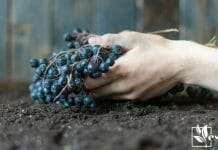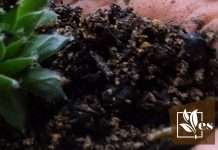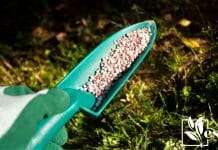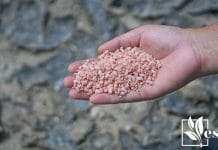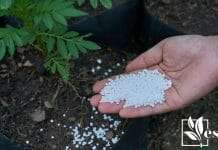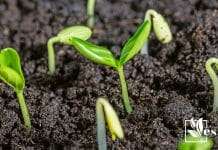As a gardener with a particular interest in nurturing tomato plants, I’ve come across various organic fertilizing options that promise to enhance soil health and boost yields. Among them, blood meal stands out as a potent organic fertilizer rich in nitrogen, a critical element for the vigorous growth of tomato plants. Utilizing blood meal in the garden can significantly benefit tomatoes, especially when incorporated into the soil properly and at the correct times during the growing season.
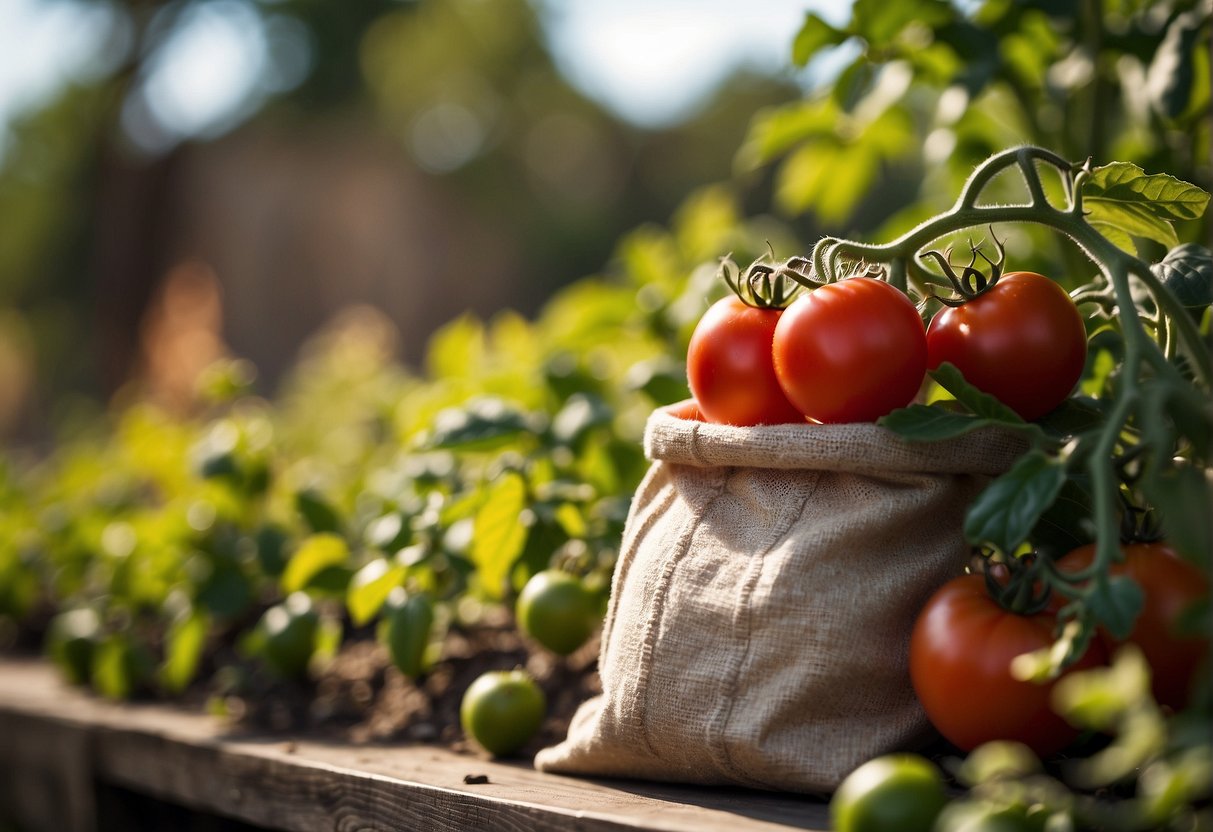
The advantages of using blood meal go beyond just its nitrogen content. Being an organic source, it supports sustainable gardening practices and contributes to overall soil health. It has the potential to improve soil structure, encourage beneficial microbial activity, and, if used with care, it’s safe for the environment. Yet, while it’s a powerful fertilizer, I am always mindful to use it judiciously, as excessive application can lead to issues such as nitrogen burn or unwanted pest attraction.
Blood meal is an effective and safe organic fertilizer for tomatoes, offering benefits like enhanced nitrogen levels and better soil health, but should be used mindfully to avoid over-fertilization.
JUMP TO TOPIC
Selecting The Right Organic Fertilizers
💥 Key Point
Choosing the right organic fertilizer for tomatoes involves understanding specific soil needs and selecting options that provide balanced nutrition.
Understanding NPK Ratios
The NPK ratio in fertilizers stands for nitrogen (N), phosphorus (P), and potassium (K), all vital nutrients for healthy plant growth. Tomatoes thrive with a balance of these nutrients, typically in a ratio such as 5-10-5. Nitrogen promotes leaf growth, phosphorus supports strong root development, and potassium is necessary for flower and fruit formation.
Assessing Soil Needs with Soil Tests
Before adding any fertilizer, it’s crucial to perform a soil test. The test reveals not only the current nutrient composition but also the soil pH, which affects nutrient availability. Tomatoes prefer a soil pH between 6.2 and 6.8, and any imbalance should be addressed to optimize nutrient uptake.
Comparing Organic Options
When I select organic fertilizers, I consider their nutrient content and how they release into the soil. Blood meal is a high-nitrogen option and acts quickly, making it suitable for supporting vegetative growth. Bone meal provides phosphorus for root health, while feather meal is another nitrogen-rich choice, albeit slower to break down. Fish emulsion and alfalfa meal supply a more balanced nutrient profile and ensure that tomatoes receive essential micronutrients.
- Blood Meal: Fast-release, nitrogen-rich
- Bone Meal: Phosphorus for root development
- Feather Meal: Slow-release nitrogen source
- Fish Emulsion: Balanced nutrients, with micronutrients
- Alfalfa Meal: Promotes growth and soil health
Maximizing Plant Growth and Health
To grow robust and healthy tomato plants, I ensure that their nutritional needs are met throughout their lifecycle, from leafy growth to fruit production.
Optimizing Nutrient Intake
Tomatoes thrive when they receive the right balance of nutrients. In my experience, blood meal serves as a high-nitrogen supplement, encouraging vigorous green growth. Here’s how I typically optimize nutrient intake for my tomato plants using blood meal:
| Nutrient | Role | Source |
|---|---|---|
| Nitrogen | Essential for leaf growth and chlorophyll production | Blood meal |
| Phosphorus | Crucial for root development and flowering | Bone meal, rock phosphate |
| Potassium | Important for photosynthesis and overall plant health | Greensand, potash |
| Calcium | Prevents blossom end rot and maintains cellular structure | Lime, gypsum |
| Magnesium | Central component of chlorophyll, aiding photosynthesis | Epsom salts |
Addressing Specific Plant Needs
Throughout the growing season, I monitor my plants and adjust their diet based on their stage of growth. For instance, during the early stages, I focus on leaf and root development by ensuring adequate nitrogen and phosphorus levels. As tomatoes enter the flowering stage, I balance their diet with more potassium and calcium. Magnesium is also critical for chlorophyll production which is vital for photosynthesis.
I am also cautious about over-fertilizing, which can harm the plants and the environment. I learned that too much nitrogen can lead to lush foliage at the expense of fruit production. Balanced feeding tailored to the tomato plant’s specific needs at each stage ensures healthy growth and bountiful yields.
Organic Fertilizer and Pest Management
In my gardening experience, organic fertilizers like blood meal are not only valuable for plant nutrition but also play a role in managing pests.
Leveraging Fertilizers for Pest Deterrence
I have found that blood meal, being an animal-based product, can be an effective deterrent against certain garden pests. The strong scent is off-putting to many animals such as deer, rabbits, and squirrels that may otherwise be tempted by the scent of ripe tomatoes. Here’s a quick snapshot:
| Pest | Deterrence Level |
|---|---|
| Deer | High |
| Rabbits | Medium |
| Squirrels | Medium |
Combining Fertilization with Integrated Pest Management
Incorporating blood meal into a broader integrated pest management (IPM) approach has been effective for me. IPM involves various methods to control pests with minimal harm to the environment. For insects like aphids and tomato hornworms, combining the use of organic fertilizers with practices like planting pest-repelling flowers or introducing beneficial insects can enhance pest management. When it comes to blood meal, however, it’s important to note:
Excessive use of blood meal can lead to nitrogen burn, attracting carnivorous pests like raccoons or over-fertilizing other soil nutrients.
By being proactive and understanding the behaviors of garden pests, I apply blood meal judiciously and in concert with other strategies to foster a thriving tomato garden that’s less disturbed by unwanted visitors.
FAQs and Best Practices for Using Organic Fertilizers
For optimal tomato growth, using blood meal as an organic fertilizer can provide high nitrogen content, which is important for vegetative growth. I apply it cautiously to avoid nitrogen burn.
When I use organic fertilizers like blood meal for my tomatoes, my primary goal is to release nitrogen efficiently into the soil while maintaining soil quality. Here are some frequently asked questions (FAQs) and best practices to consider:
Application methods: I apply blood meal directly to the soil around the base of my tomato plants, then gently till it in or water it down to start the nitrogen release process.
Working efficiency: As blood meal is organic, it works slower than synthetics but ensures a steady supply of nutrients.
Efficacy: The high nitrogen content is very effective in promoting leafy growth, especially for nutrient-hungry plants like tomatoes.
Soil quality: Regular application helps in adding organic matter and improving the carbon to nitrogen ratio of my compost and soil.
Adding to compost: I occasionally mix blood meal into my compost pile to boost nitrogen levels, but I’m careful with the quantity to avoid unbalancing the pile.
💥 Best Practices:
– I ensure to use the correct amounts of blood meal to avoid excessive nitrogen, which can harm the plants and reduce fruiting.
– To maintain efficacy, I reapply blood meal every 2 months during the growing season.
– It’s essential to keep an eye on the response of my tomatoes to adjust the quantity and frequency of application, if necessary.
By following these practices and being mindful of the FAQs, I am able to use blood meal effectively and sustainably, promoting vigorous growth and contributing to the overall health of my tomato plants.




